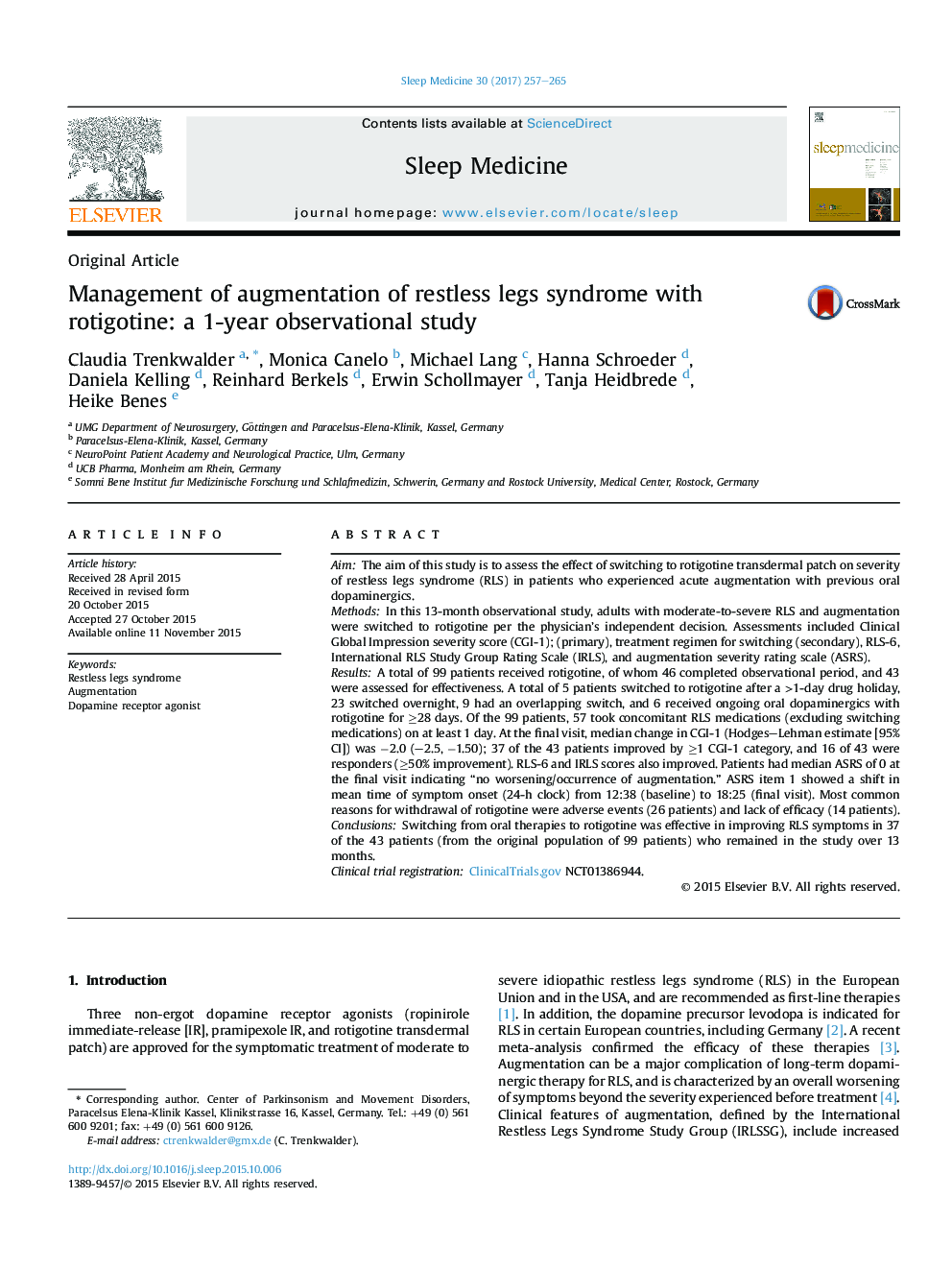| کد مقاله | کد نشریه | سال انتشار | مقاله انگلیسی | نسخه تمام متن |
|---|---|---|---|---|
| 5643835 | 1586479 | 2017 | 9 صفحه PDF | دانلود رایگان |
- This was a 13-month noninterventional study in patients with restless legs syndrome (RLS).
- Patients with augmentation on oral dopaminergics were switched to rotigotine patch.
- The RLS symptom severity improved with rotigotine in severely affected patients.
- Switching to rotigotine may be a therapeutic option for the management of augmentation.
AimThe aim of this study is to assess the effect of switching to rotigotine transdermal patch on severity of restless legs syndrome (RLS) in patients who experienced acute augmentation with previous oral dopaminergics.MethodsIn this 13-month observational study, adults with moderate-to-severe RLS and augmentation were switched to rotigotine per the physician's independent decision. Assessments included Clinical Global Impression severity score (CGI-1); (primary), treatment regimen for switching (secondary), RLS-6, International RLS Study Group Rating Scale (IRLS), and augmentation severity rating scale (ASRS).ResultsA total of 99 patients received rotigotine, of whom 46 completed observational period, and 43 were assessed for effectiveness. A total of 5 patients switched to rotigotine after a >1-day drug holiday, 23 switched overnight, 9 had an overlapping switch, and 6 received ongoing oral dopaminergics with rotigotine for â¥28 days. Of the 99 patients, 57 took concomitant RLS medications (excluding switching medications) on at least 1 day. At the final visit, median change in CGI-1 (Hodges-Lehman estimate [95% CI]) was â2.0 (-2.5, â1.50); 37 of the 43 patients improved by â¥1 CGI-1 category, and 16 of 43 were responders (â¥50% improvement). RLS-6 and IRLS scores also improved. Patients had median ASRS of 0 at the final visit indicating “no worsening/occurrence of augmentation.” ASRS item 1 showed a shift in mean time of symptom onset (24-h clock) from 12:38 (baseline) to 18:25 (final visit). Most common reasons for withdrawal of rotigotine were adverse events (26 patients) and lack of efficacy (14 patients).ConclusionsSwitching from oral therapies to rotigotine was effective in improving RLS symptoms in 37 of the 43 patients (from the original population of 99 patients) who remained in the study over 13 months.Clinical trial registrationClinicalTrials.gov NCT01386944.
Journal: Sleep Medicine - Volume 30, February 2017, Pages 257-265
